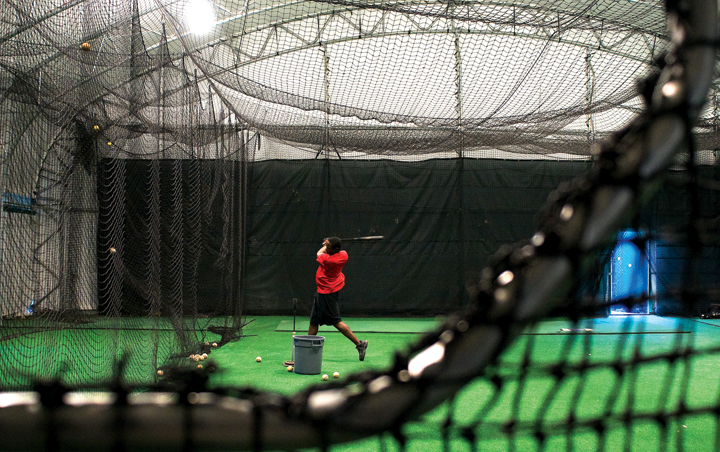
Coach Erik Bakich has overseen an overhaul of the baseball team’s facilities.
Tucked away in the state’s capital budget, in between the $41.1 million set aside for a new Physical Sciences Complex on the campus and the $5 million budgeted for the East Campus redevelopment, there is a project so financially negligible the University System of Maryland’s Office of Government Relations didn’t even include it in its report on the 2010 legislative session.
It’s an undertaking that means little to the university but a whole lot to the first-year baseball coach it employs. It’s a necessary chunk of cash for a Terrapin baseball program that needs whatever help it can get to realize its dreams of ascending from cellar dweller to heavyweight.
During the course of the fall, coach Erik Bakich, with the help and charm of Director of Baseball Operations Bernie Walter, hosted a number of the state’s most influential political leaders in hopes of convincing them to deliver the program a much-needed financial gift.
The result was a $100,000 project — the least expensive budget allotment of the four the university received — that has been designated for “Shipley Field Improvements.” The lump sum, if spread throughout the program, could make a noticeable difference in improving the facilities of one of the conference’s most needy programs.
But Bakich said every dollar the program receives, along with additional funds from within the program, will be funneled into one construction project — an enormous fence in center field mostcommonly known as a batter’s eye.
Bakich said he plans to erect the fence “as high and as wide as they will allow” to make it harder to hit home runs, thus making it easier to attract some of the nation’s top pitching talent to College Park.
As it stands, the center-field fence in Shipley Field is a mere 380 feet away from home plate, a good 20 feet closer than the center-field fence at all other conference stadiums. The difference in distance often results in what the players and coaches jokingly refer to as a “Shipley Field home run”: a round-tripper that, in another team’s more expansive outfield, would be a regular fly out.
Terps’ ace Brett Harman can’t even count how many times he has been victimized by the stadium’s cramped dimensions, and just the thought of having a 50-foot addition to the fence to protect him gets him excited.
“The whole staff is pretty excited about it,” Harman said. “We are still going to have to pitch well but this is something that will be unique to the ACC and will also make our jobs as pitchers a lot easier.”
The Terps won’t be able to begin construction on the ambitious project until the money is allocated when the new fiscal year begins July 1. In the meantime, Bakich has worked hard to make short-term improvements to the team’s facilities.
The revamped locker room is so different that both Harman and fellow pitcher Dan Gentzler said that comparing the pre-Bakich version to the one they now enjoy is “night and day.” The old rusty, red locker rooms now don a black coat of paint, replete with couches and flat-screen TVs.
Last season, when it was too cold to practice on the field, the team had to travel across Route 193 to the indoor practice bubble. But before this season even began, the team constructed an enormous green dome next to the coaches’ trailer that has come to be known as “The Thunder Shell.”
It isn’t quite the type of complex that some of the conference’s elite boast, but the four batting cages are more than the team had at their disposal before. And the team’s new ability to practice indoors comes in handy when battling the winter conditions that overlap with the start of baseball season.
“Not only is it so much easier to get to than the golf course, but we don’t get those Florida winters,” Gentzler said. “We can’t be outside at the beginning of February, and if we are gonna have snow consistently like we did this year, having stuff like that … is huge.”
It has been nearly a decade since the Terps used to battle Virginia to stay out of the conference cellar. Since then, the Cavaliers’ program has received millions of dollars and, aided by the sudden influx of money, become one of the premier programs in the conference and a perennial national title contender. Bakich has similar hopes and goals for the Terps, including brand-new locker rooms and perhaps a new stadium, too.
But unlike Virginia, Bakich doesn’t yet have the luxury of wealthy donors providing the foundation for success. Instead, he will have to prove he can field a winning Terps’ team before he can start thinking about a playing field of his own design.
“Those things are a long way off, but they aren’t going to ever be realistic until we win and prove that we can become a winning program,” Bakich said after the Virginia series. “It is different because those teams were able to build winners by receiving the money first. We are trying to build the program from the inside-out, and that means competing on the field first and foremost.”
lemaire@umdbk.com



